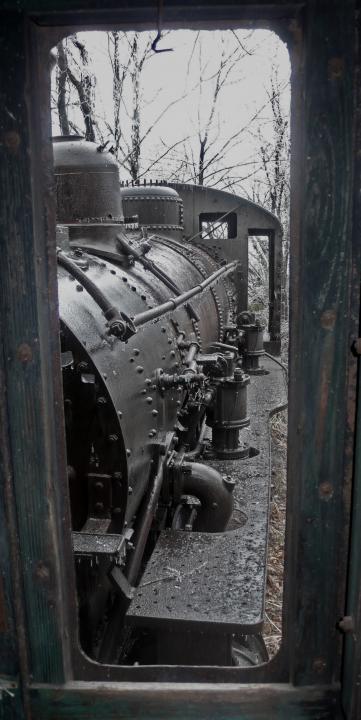You are here

My son attended college in Winston-Salem NC, so I had the opportunity to travel through Roanoke on many occasions over that four year period. Leaving Roanoke to the south on one occasion, I spied a set of odd shapes tucked at the back of a nearly defunct junkyard; climbing over some fencing and across several piles of debris, I came upon a line of derelict steam and diesel units. A large tree growing through the pilot of one of the locomotives testified to the long period of immobility.
I returned to the spot on a number of occasions, but the lighting and layout were never particularly conducive to an interesting photograph. Awakening one morning to find the area still blanketed in the freezing rain which had necessitated the interruption of my trip the prior night, I again visited the dead line, sloshing through partially frozen puddles and ankle-deep mud to climb up into the cab of the middle steam engine.
This photograph was taken from the fireman’s side of the cab, looking backward (north) toward the most northerly of the locomotives. Since I was carrying only my small Leica digital camera, and no ancillary equipment, I braced myself against the firebox to stabilize the camera. The foreground – interior of the cab – and main subject were illuminated so differently, and were at such different distances, that I needed to take two photographs, optimized for each component of the photograph, and then merge the two images in Photoshop. Despite these technical challenges, the photograph captures the dead line, with the icicles hanging off the glistening ice-encrusted surfaces of the iron and steel. Additionally the texture of the well-worn wood of the interior of the cab contrasts with the icy branches overhanging the scene.
This image of the frozen dead line of locomotives captures “The End of Steam” – at least for me.
Leica DLux 3, hand held. ISO100, 1/50 sec, f2.8

![]()


 >
> >>
>>